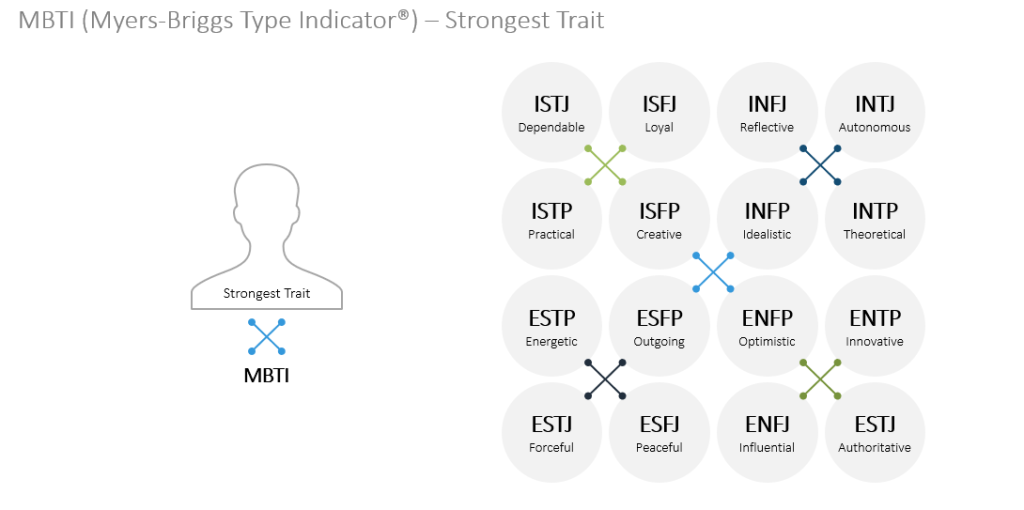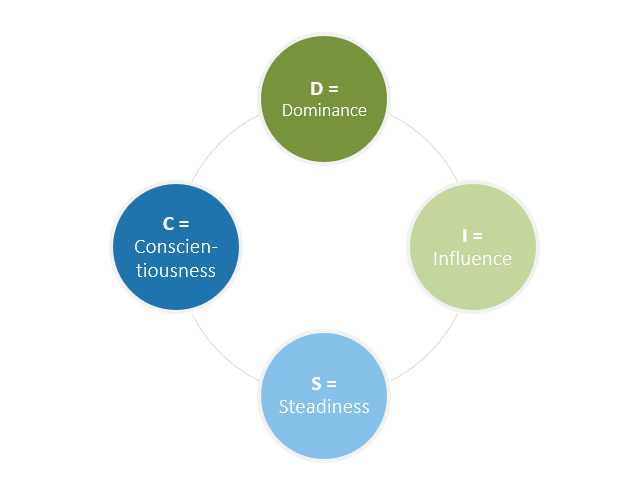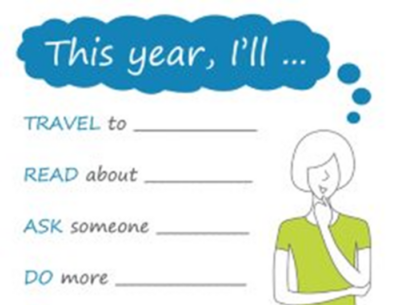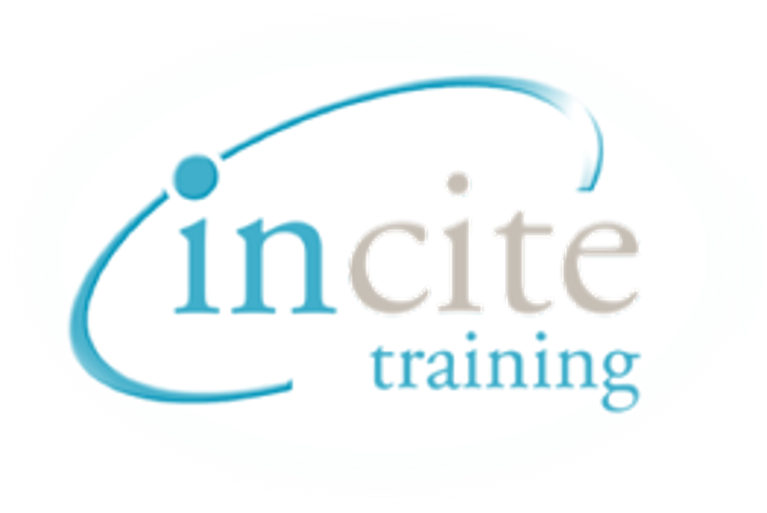

Ten Presenting Styles : What Kind Are You?
Do you feel nervous when it comes to public speaking?
Don’t worry; you’re not alone.
Do you know that according to research, one of the biggest phobias in 2014 was public speaking? Fear of public speaking is in the same range as fear of heights, bugs, snakes, and needles!
And why is this the case? We’ve always been taught that there is a “correct” way to present. That is, if you do not adhere to these guidelines, you will fail as a presenter.
You’ve undoubtedly read a lot about presenting techniques, seen several TED talks , and even attended soft skill sessions. All of this may have, either directly or indirectly, helped you build a notion of how you should present
However, if you look closely at some of the most well-known speakers, you’ll find that there isn’t just one perfect approach to deliver. You’ll be glad to discover that there are several ways to present and people find the way that matches their style of being.
Your personality naturally influences how you approach a task, such as presenting in front of an audience. To ensure that your presentation runs smoothly, you must first identify what type of presenter you are. We’ve prepared a list of 10 distinct types of presenters, so figure out which one you are and get ready to deliver a compelling presentation.
10 Different Types Of Presenters
There are several methods in which someone might deliver their presentation. The following are some of the most popular types of presenters:
Interactive
Storyteller
Facilitator
Connector presenters usually engage and connect with their audience. This generally comprises the speaker asking questions frequently and promoting audience participation and involvement.
Connectors generally use this technique to illustrate their shared commonalities with the audience to connect with them more effectively.
If you’re a salesman presenting early in the sales process, this is a terrific presentation style to adopt. It assists you with understanding the audience’s goals and issues, as well as how you can solve these problems.
A coach is always passionate about the subject of his/her presentation. They’re frequently eager to teach their audience, which makes them excited to interact and connect with them.
This type of presenter frequently focuses on audience participation and role-playing. They’re frequently influencing the audience on concepts rather than the specifics of a particular issue. This type of presenter usually enjoys explaining ideas and making people interested in the topic at hand.
Interactive presenters generally use a range of tools to have multi-way interactions with and between the audience e.g. whiteboards, MIRO boards, Polls, and other aids in their presentations to keep the audience engaged throughout the session.
Keeping it interactive throughout the presentation also allows the audience to follow along and feel like they are a part of the presentation. These presenters particularly enjoy workshops and problem-solving sessions.
An inspirer presents with vision and a deep sense of mission and takes the audience on a journey.
With excitement, energy, and a drive to motivate, and make others feel good, these presenters end up having a long-lasting impact and tend to deliver memorable presentations. They don’t tend to rely on too many audio-visual aids and instead deliver based on the force of their personality and oratory skills.
Instructors keep their content organized rigorously to support topics and cover their material in a methodical manner. They tend to be descriptive and sometimes, prescriptive in their approach to the presentation topic. Instructors are generally those presenters who are extremely educated about their subject.
Many presenters employ this presenting approach while addressing a complicated to their audience. They use a variety of artifacts to do justice to their instructional approach: employing common words, figures of speech, analogies, and pictures to simplify a complex issue for the audience to grasp.
Directorial presenters tend to have a very clear idea of what they want out of the session. They orchestrate many pieces and are very specific in terms of the feedback they need, action items they want to assign, their expectations of the audience, etc.
They normally create and adhere to a concise script, with little to no improvisation throughout the presentation.
Directorial presenters usually prepare for limited points at a given moment throughout the presentation to ensure that they remain in control and on the topic at the same time.
Storytellers do not require a lot of figures, data, or statistics in their content. They frequently use anecdotal and emotional content to capture the audience’s attention and connect with them.
They usually begin with narratives that relate to the main theme of the presentation. They intuitively understand that most of us are wired for stories and end up paying more attention to the presenter when the content is presented in a story format.
Analysts are obsessed with accuracy, correctness, and advancement, and they rely extensively on logic, data, facts, and figures to convey their points. They can be highly reliant on their material and want to add plenty of evidence eg graphs, charts, and other artifacts to support their arguments.
Analysts enjoy quantifying information. And tend to do well on topics that lend themselves to such treatment. Many Analyst presenters also have enormous potential to improve their talents by thinking of how to win the hearts in addition to the minds of the audience by adding a variety of communication, narrative, and slide design abilities.
The Facilitators’ primary goal is to crowdsource their content during the presentation. Facilitators are already in a good position to flourish as excellent presenters since presenting is all about people.
Facilitators tend to make heavy use of templates to get inputs from their audience in a structured manner. They are naturally mature communicators who are skilled at leveraging the energy and knowledge of the audience to spur great discussions.
Who says you need fancy slides and extensive scripts to give a successful presentation?
Creativity speakers like Sir Ken Robinson demonstrate that if you know what you want to say, have 2-3 main points in mind, a decent sense of humor, and some tales to relate and illustrate your ideas, you’re set to go even without slides or a script.
This unplanned presenting style may intimidate some, but it may excite others who feel confined by rules and structure.
If you want something a little less intense, you may just create a simple deck with keynotes or parts. Avoid storing significant amounts of info in your mind, as you would with a minimalist approach.
Many free-form speakers just get started, don’t rehearse as much, and feel uneasy presenting a presentation prepared by others.
At SlideUpLift, we offer presentation templates for all kinds of presenters to aid in their visual communication. You can try our free PowerPoint templates and google slides templates to complement your presentation style.
Few Templates For Your Presentation Needs
30 60 90 Day Plan
Source: 30 60 90 Day Plan by SlideUpLift
Bulb Strategy
Source: Bulb Strategy by SlideUpLift
Business Roadmap
Source: Business Roadmap by SlideUpLift

Customer Journey
Source: Customer Journey by SlideUpLift
Wrapping It Up
Knowing your presenting type will allow you to capitalize on your strengths while protecting against your limitations. Simultaneously, it will help you adopt a style that seems more natural to you.
Armed with this knowledge, and with the force of your nature behind it, the more you practice, the better you will get, and hopefully, there will be one person less in the world who is afraid of public speaking.
Best of luck with your future presentations!
Regardless of the style you like, we’ve got your back when it comes to creating the slides that will enhance your presentation!
Table Of Content
Related posts from the same category.

28 Jan, 2022 | SlideUpLift
Present TED-style: Six Things TED Presenters Do That You Can Copy And Use In Your Next Presentation
It's a harsh reality of the digital age: capturing and maintaining another person's attention is becoming increasingly difficult. While there is minimal factual information on the typical person's attention span

11 May, 2023 | SlideUpLift
6 Types of Presentation You Must Know (+ Tips)
Are you tired of giving the same old boring presentation, using the same format every time? Have you ever wondered if there are different types of presentations to achieve different

20 Aug, 2021 | SlideUpLift
Storytelling Tips to Change the Way You Present Ideas
A piece of oft-given advice surrounding making presentations is that in order to engage an audience, your presentation and speech need to have a narrative. And we wholeheartedly agree with

12 Jun, 2018 | SlideUpLift
Microsoft PowerPoint Shortcuts That You Didn’t Know
PowerPoint is nothing short of a phenomenal tool when it comes to building business presentations. If you have been a regular PowerPoint user, you would already know that it has

22 Aug, 2024 | SlideUpLift
Best Professional Presentation Examples To Inspire You [+ Premium Templates]
It’s crucial for professionals to deliver outstanding and engaging presentations that convey essential information to their teams and stakeholders. Most professional PowerPoint themes are the backbone of corporate presentations and

8 Mar, 2024 | SlideUpLift
Best Free Google Slides Templates & Themes For You To Try!
Google Slides has made professional presentations much more convenient in corporate settings. With its features, you can collaborate on presentations in real-time with your colleagues and present in groups, that

14 Oct, 2022 | SlideUpLift
How To Create Your Perfect Webinar Presentation
Webinars are becoming an increasingly important tool for businesses to connect directly with their customers — to educate and inform, maintain relationships and even build a brand. They're also excellent

30 May, 2024 | SlideUpLift
10 Best Free PowerPoint Templates You Need To Check Out
The internet is full of templates for presentations, but finding a free template that matches your needs and compatibility is frustrating. Not anymore! We have compiled a list of our

3 Feb, 2022 | SlideUpLift
8 Tips Ahead Of Your Big Day: The Big Presentation Tips
Are you preparing for your next big presentation? Aside from preparing, writing, and practicing your speech, there are certain other actions you should do to ensure you are truly prepared

25 Mar, 2019 | SlideUpLift
PowerPoint Hacks You Did Not Know For Effective Presentations
Being a consultant to professionals for creating the perfect business presentations, we have come across a vast multitude of issues faced by clients on a regular basis. The deep experience
Forgot Password?
Privacy Overview
Necessary cookies are absolutely essential for the website to function properly. This category only includes cookies that ensures basic functionalities and security features of the website. These cookies do not store any personal information
Any cookies that may not be particularly necessary for the website to function and is used specifically to collect user personal data via ads, other embedded contents are termed as non-necessary cookies. It is mandatory to procure user consent prior to running these cookies on your website.

- Our Pillars
Think fast, fluently and structurally
Communicate with confidence and charisma
Navigate workplace challenges with ease
- Comparative Analysis
- Success Stories

Enhancing Personal Impact: Presentation Skills and Personality Development
- Presentation Skills
- June 1, 2024

You’re in a job interview, seated across from the hiring manager, eagerly awaiting your chance to make a lasting impression. As the interview progresses, you’re asked to deliver a short presentation on a topic relevant to the role. Your ability to articulate your ideas effectively, engage your audience, and convey confidence becomes paramount in that moment.
In today’s dynamic and interconnected world, communication skills reign supreme. Whether it’s in the boardroom, the classroom, or even social settings, the ability to communicate with clarity and conviction is a skillset highly sought after and deeply valued.
An effective communicator not only conveys ideas but also understands the importance of non verbal communication and how personal appearance can impact the message. Mastering these aspects, along with having a solid grasp of knowledge, can significantly enhance one’s ability to present ideas effectively and make a lasting impression.
At the core of effective communication lies the art of presentations. Far beyond just delivering speeches, presentation skills cover the ability to structure information coherently, utilize visuals to enhance understanding, and command attention through compelling delivery. However, their significance goes beyond the world of public speaking.
Presentation skills personality development – results in our strengths, weaknesses, and unique attributes. They are a vehicle through which we can express ourselves, connect with others, and leave a lasting impression. As such, mastering presentation skills isn’t merely about becoming a proficient speaker; it’s about nurturing a more confident, charismatic, and influential persona.
In this blog, we’ll unravel the profound impact that presentation skills personal development have. We’ll delve into the indispensable role of communication skills in today’s society, the multifaceted nature of presentation skills, and the transformative journey of enhancing one’s personality through effective presentations. Incorporating self-awareness, self-presentation, and soft skills into our presentations improves our ability to convey information and deepens our understanding of ourselves and how others perceive us. So, let’s embark on this enlightening exploration together and unlock the transformative potential of presentation skills for personal development. So, let’s embark on this enlightening exploration together and unlock the transformative potential of presentation skills for personal development.
What Are The Most Important Presentation Skills?
These skills form the foundation of effective communication and are crucial for capturing and maintaining your audience’s attention.

Verbal Communication
Verbal communication is the cornerstone of effective presentations, encompassing the words we choose, the tone of our voice, and the clarity of our message. Here’s how to master this essential skill:
Clarity: Express your ideas clearly and concisely, avoiding unnecessary jargon or complex language that may confuse your audience. Logically structure your sentences and phrases, making it easy for your audience to follow your thoughts.
Vocal Variety: Use vocal inflection to add emphasis and interest to your words, varying your pitch, pace, and volume to keep your audience engaged. Experiment with different tones and intonations to convey emotions and highlight main points in your presentation.
Active Listening: Practice active listening skills by paying attention to verbal cues and feedback from your audience. This will allow you to adjust your delivery and respond appropriately. Use techniques such as paraphrasing or asking clarifying questions to understand your audience’s needs and concerns.
Nonverbal Communication
Nonverbal communication, including body language, facial expressions, and gestures, is crucial in conveying meaning and establishing rapport with your audience. Here’s how to leverage nonverbal cues effectively:
Body Language: To project confidence and authority, maintain an open and confident posture, with relaxed shoulders and an upright stance. Use gestures sparingly and purposefully to emphasize key points or concepts, avoiding distracting or repetitive movements.
Facial Expressions: Use facial expressions to convey emotions and engage your audience, smiling warmly to establish rapport and convey enthusiasm for your topic. Maintain eye contact with your audience to build trust and connection, demonstrating attentiveness and sincerity in your message.
Proximity: Be mindful of your proximity to your audience, adjusting your distance to create a sense of intimacy or formality depending on the context. Respect personal space boundaries and avoid invading your audience’s personal space, as this can create discomfort and detract from your message.
Visual Aids
Visual aids such as slides, charts, and graphics are powerful tools for enhancing understanding and retention of information in presentations. Here’s how to use visual aids effectively:
Simplicity: Keep visual aids simple and uncluttered, with clear headings and bullet points that convey information succinctly. Use visuals to complement your spoken words, providing additional context or emphasis without overwhelming your audience with too much information.
Visual Hierarchy: Arrange visual elements in a logical hierarchy, with the most important details or key points presented prominently and clearly. Use visual cues such as colour, size, and font style to guide your audience’s attention and reinforce the hierarchy of information.
Consistency : Maintain a consistent visual style throughout your presentation, using cohesive colours, fonts, and design elements to create a polished and professional look. Avoid distracting animations or transitions that detract from the content of your presentation, focusing instead on clarity and readability.
Enhancing Personality Through Presentation Skills
Mastering presentation skills extends far beyond the ability to convey information effectively—it’s a transformative process that shapes one’s personal and professional identity. This comprehensive guide will explore how developing presentation skills can significantly enhance personality traits such as self-confidence, charisma, resilience, and professionalism, each contributing to a more compelling and influential presence.

Building Confidence
Confidence is perhaps the most crucial attribute that can be developed through enhanced presentation skills. It begins by tackling the internal self-doubts that many face before stepping onto the stage. The key is to challenge and reframe negative thoughts and limiting beliefs about one’s abilities. Visualization techniques are particularly effective here; imagine delivering a successful presentation, which can help solidify a positive mental image and reduce performance anxiety. Additionally, systematic exposure to public speaking can desensitize fear, allowing confidence to build over time. Each good presentation adds a layer of assurance. Addressing audience questions effectively can also boost your self-esteem and provide validation of your presenting.
Feedback plays a critical role in this development. Constructive criticism should be sought out and viewed as a golden opportunity for growth. With each piece of feedback, refine your approach, focusing on areas for improvement while consolidating your strengths. This iterative process not only bolsters confidence but also cements a foundation of competent, assured public speaking.
Enhancing Charisma
Charisma is the magnetic charm or appeal found in those who can influence others naturally. Effective presentation skills foster charisma by enhancing how one connects with and engages an audience. Authenticity is crucial; when presenters are true to themselves, it resonates well with the audience, establishing trust and likability. Incorporating storytelling into presentations is another powerful method to develop charisma. A personal story can captivate and emotionally engage an audience, making the message more memorable and the speaker more endearing. Understanding how people perceive you is an important factor in maintaining their interest and keeping people interested. Stories can captivate and emotionally engage an audience, making the message more memorable and the speaker more endearing.
Nonverbal communication is also a component of charisma. Practitioners must be aware of their body language, facial expressions, and tone of voice—all of which should align with the message being conveyed. A warm, confident, and enthusiastic delivery can significantly enhance the charisma of the presenter, making the interaction more enjoyable and impactful for the audience.
Fostering Resilience
Resilience in the context of presentation skills refers to the ability to bounce back from setbacks and continue to improve. This trait is cultivated by viewing each presentation as a learning opportunity, regardless of its outcome. Embracing failure as part of the journey is essential; each setback should be analyzed for lessons and used as a stepping stone for future success. Developing a growth mindset, where challenges are seen as opportunities to grow, is crucial for sustaining long-term improvement in presentation skills.
Support mechanisms also play a vital role in building resilience. This includes seeking out mentors, joining speaking clubs, or engaging with a community of fellow presenters where experiences and insights can be shared. Such environments can provide both support and constructive feedback, which are indispensable for continuous growth and resilience.
Exuding Professionalism
Professionalism in presentations is demonstrated through meticulous preparation and the respectful delivery of content. Preparation involves a deep understanding of the topic, anticipating potential questions, and rehearsing extensively. This preparation reflects respect for the audience and enhances the presenter’s credibility. Staying focused on the main points and being ready to present them clearly is key to successful communication.
During the presentation, maintaining professional conduct is crucial. This includes being punctual, dressed appropriately, and engaging with the audience respectfully. Professionalism also extends beyond the presentation—it encompasses how one networks, responds to feedback, and interacts with peers and superiors in all settings.
Implementing The Skills
Maintaining professional conduct during the presentation is crucial. This includes being punctual, dressed appropriately, and engaging with the audience respectfully. Professionalism also extends beyond the presentation—it encompasses how one networks, responds to feedback, and interacts with peers and superiors in all settings.
Additionally, leveraging technology can provide new platforms and mediums for practicing and receiving feedback. Online webinars, virtual meetings, and digital communication tools offer unique opportunities to hone one’s presentation skills in diverse environments.
Conclusion: P resentation Skills Personality Development
As we cultivate the discipline and creativity required to craft compelling presentations, we develop valuable life skills such as organization, time management, and critical thinking. We learn to approach tasks with purpose and clarity, and to navigate complex situations with grace and composure. Ultimately, the journey of mastering presentation skills is not just about becoming a better presenter; it’s about becoming a better person – one who is confident, articulate, and capable of making a positive impact in the world. With dedication, perseverance, and a commitment to continuous improvement, you can unlock the full potential of your personality and become the best version of yourself.

Rishabh Bhandari
Rishabh Bhandari is the Content Strategist at Kapable. Rishabh likes to transform complex ideas into captivating narratives relatable to the target audience. He loves telling stories through his content. He believes that stories have the power to shift mindsets and move mountains. He has 3 years of experience in educational blog writing and copywriting.
Exploring the Functions of Leadership within Management
Training for effective leadership: presentation skills for managers, kapable updates.
Stay connected and get the latest updates by following us on our social media channels

Develop Must-Have Skills To Navigate Workplace Challenges And Build Executive Presence
Subscribe To Our Newsletter
Gain insider access to expert strategies and solutions for leadership success
Explore Topics
- Presentation Skills (21)
- Stage Fear (3)
- Conflict Management (17)
- Emotional Intelligence (33)
- Articulation (5)
- Story Telling (7)
- Communication Skills (27)
- Public Speaking (12)
- Leadership (66)
- Persuasion (10)
- Self Confidence (17)
- Negotiation Skills (31)
Recent Posts

200 Public Speaking Topics: Unique Speech Ideas for Students in English
- 22 January 2024

Inspiring Leadership Stories: Short Narratives with Moral Lessons
- 15 January 2024

Self Confidence Swami Vivekananda Quotes: Wisdom and Inspiration
- 16 February 2024

Behavioral Theory of Leadership: Definition, Approach in Organisational Behavior
- 20 October 2023

What Are The Best Books To Improve Communication Skills?
- 30 December 2023
Begin your transformational journey
You can also check out.

Effective Leadership Communication Skills: Lessons for Leaders

Conflict Management Techniques: Methods for Managing Conflict in a Team and at Work

How To Tell A Story Presentation
Frequently asked questions.
We train working professionals on enhancing the essential skills so that they become better thinkers, communicators, and leaders. Our comprehensive programs cover key aspects of leadership including strategic thinking, effective communication, and management capabilities.
Our programs are ideal for anyone looking to enhance their executive presence, lead teams effectively, and communicate with confidence and charisma to make a significant impact in their organisation.
- Your Journey
Tailor Your Presentations to Personality Types: Tips&Tricks!
Have you heard it before? Your presentation must be tailored to your target audience to be successful. That’s correct. But have you ever taken a closer look at who your target audience really is, beyond just looking at the usual data? Psychological aspects can also have a significant influence on the success of your content.
Today, we introduce you to different personality types, explain how they can help in the context of presentations, and how you can skillfully align your presentations with your audience.
Why do you need to know your target audience?
Understanding the target audience is crucial for the success of a PowerPoint presentation. An audience is composed of individual personality types, each with different needs, interests, and preferences . To make your presentation and content successful, it is essential to tailor them to these specific needs and interests.
To learn how to conduct a target audience analysis, read our article on “ Target Audience Analysis. “
To create an impactful presentation, it is essential to delve into the potential audience beforehand. Only through a well-founded understanding of the different personality types can the presenter tailor their message effectively to the audience’s needs, engaging them and generating enthusiasm for the content.
Analyzing the personality types of the audience can provide insights into the most effective types of content , examples, and visual aids to capture the audience’s attention and interest.
By knowing the types, you can guarantee a more individualized approac h that appreciates the audience’s diversity and uniqueness, leading to a more positive impact.
Handling the different personalities with empathy not only contributes to the audience’s attention and positive response but can also establish a deeper connection and strengthen trust in the presenter.
What are personality types?

Every individual is different, meaning that each person has their own personality traits . These traits play a central role in interactions between people and significantly influence their perception, reactions, and decisions.
Due to the diversity of personalities, various theories in personality psychology attempt to develop typologies to describe and classify the variety of individual characters. The idea behind this is to identify certain behavioral patterns, traits, and preferences that are typical for specific groups of people. Such typologies can be of great use not only in psychology but also in other areas like communication and presentation to better understand the audience’s behavior and needs.
Various Personality Models
Over time, psychology has developed different models to describe these personality traits and categorize them into typologies. Here, we introduce the most well-known models:
The Myers-Briggs Type Indicator (MBTI)

One well-known typology is the Myers-Briggs Type Indicator (MBTI), which classifies personality based on four dimensions.
The model divides people into 16 different personality types, each represented by four letters:
• Extraversion (E) or Introversion (I)
Describes where individuals feel most comfortable. Extraverted individuals are sociable and gain energy from interacting with others. Introverted individuals, on the other hand, feel more comfortable in quiet, withdrawn situations and gain energy through self-reflection.
• Sensing (S) or Intuition (N)
Describes how people perceive and process information. Sensing types prefer concrete facts and information perceived through their senses, while intuitive types are more interested in abstract ideas and connections and rely on intuition and imagination.
• Thinking (T) or Feeling (F)
Describes how decisions are made and how emotions are handled. Thinking types prefer a rational and logical approach, orienting themselves around objective criteria. Feeling types, however, place more emphasis on emotions and empathy, often making decisions by considering others’ feelings.
• Judging (J) or Perceiving (P)
Sheds light on how people interact with their external environment and organize information. Judging types prefer structure, planning, and organization and tend to make decisions and complete tasks. Perceiving types, on the other hand, are more flexible and spontaneous, keeping their options open to adapt to new information.
The model aims to help understand individual preferences and behaviors and is commonly used in personality development, teamwork, and career choices. Deeper information can be found here .
Regarding presentations , the model can provide insights into decision-making processes, information absorption, and how emotions might influence potential purchases.
The Big Five Model
The Big Five Model is a personality psychology that describes five fundamental personality dimensions:
- Neuroticism
- Extraversion
- Openness to Experience
- Agreeableness
- Conscientiousness
The model aims to capture and understand individual differences in these dimensions. It is frequently used to examine personality traits, make predictions about behavior, and has applications in various fields such as psychology, organizational development, and human resources.
Regarding presentations, the Big Five Model can be useful in several ways:
It gives insights into the personality traits of the audience, providing a better understanding of the target audience. This enables a targeted adjustment of the presentation to better accommodate various needs and preferences.
You can tailor your content based on the audience’s interests and preferences , making your presentation more relevant, engaging, and attention-grabbing. It can also be helpful in handling questions and feedback . By better understanding personality types, you can respond appropriately to questions or feedback, fostering positive interactions.
The DISC Model

The DISC model categorizes people into four main types :
• D (Dominant)
Individuals with the Dominant type are characterized by their assertiveness, determination, and goal orientation. They are often decisive, confident, and determined. People with this personality prefer clear structures and quick results and tend to like taking control.
• I (Influence)
Here, we have extroverted, enthusiastic, and social individuals. Influential persons are often charismatic, communicative, and sociable. They enjoy being in the spotlight and motivating others. Influence types are usually optimistic and tend to be attracted to new ideas and challenges.
• S (Steadiness)
The Steadiness type is calm, patient, and team-oriented. They are empathetic, loyal, and reliable. They prefer a harmonious environment and work well in cooperative teams.
• C (Conscientious)
Conscientious types are precise, detail-oriented, and analytical. Individuals of this type place great importance on accuracy, quality, and thoroughness. They are often well-organized and responsible. Conscientious personalities have high standards and work diligently and precisely.
In the context of presentations , the model can help you understand your audience’s behavior and needs and adapt your presentation accordingly. It contributes to making your PowerPoint presentations more effective, targeted, and engaging.
The Enneagram Model
The Enneagram model describes nine different personality types , each represented by a number from 1 to 9. The model shows how the nine types are interconnected and how they differ in their thinking, feeling, and behavior. Behavior patterns become clearer.
Regarding presentations , the model also helps not only to understand the audience but also to better understand one’s own personality type . This way, one can consciously utilize their strengths. Similar to the other models, valuable insights can be drawn from the personality types for your presentations, and you can skillfully adapt them.
The Four Basic Personality Types
Fundamentally, all personality models establish four similar personality types:
• The Analyst
This personality type is characterized by their love for detail and thorough approach. Analysts are rational, logical, and careful in their decisions. They prefer clear facts and data and seek precise information. In presentations, they are interested in well-structured content and well-founded arguments.
• The Pragmatist
This type is pragmatic and solution-oriented. Pragmatists prefer concrete information and practical applications to solve problems or face challenges. They are action-oriented and value clear instructions and practical examples. Visual aids and practical tips appeal to them in presentations.
• The Visionary
This type is a creative and imaginative personality type. They think in grand contexts and are interested in abstract ideas and visions of the future. They seek innovative and inspiring content. Presentations that showcase new perspectives and convey a vision capture the attention of visionaries.
• The Socially-Oriented
The socially-oriented personality type is empathetic, compassionate, and team-oriented. Socially-oriented individuals value interpersonal relationships and harmonious interactions. In presentations, they are interested in content that has social impact and promotes cohesion. Interactive elements and consideration of the social dimension in the presentation appeal to them.
Therefore, try to categorize your audience into these categories using the models. Once you have completed the categorization, you can tailor your presentation to the group accordingly.
How to Determine Your Audience Without Models

If you don’t want to delve into complex personality models but still want to recognize the types present in your audience, you can analyze your audience in the following ways:
• Observing Body Language:
Observe your audience while you present. What do their gestures, facial expressions, seating posture, and eye contact look like? These nonverbal signals also provide insights into personality types.
For example, attentive and calm listeners may potentially be Analytical types, while enthusiastic and socially interactive participants may be associated with Visionary or Influence types.
• Questionnaires/Surveys:
By using questionnaires or surveys before or after presentations, you can determine personality types. Include questions from the above-mentioned models so that participants must assess themselves, and you can define their personality types based on their responses.
Surveys after presentations can also provide information on how your presentation impacted the participants . This way, you gain insights into how different personality types received your presentation and can adapt future presentations accordingly.
• Conversations:
In personal conversations with some participants before the presentation, you can also gather information about the audience’s personality types. Informal talks or short interviews can yield insights into what the listeners expect from the presentation, which topics interest them the most, and how they typically react to presentations.
These insights can help you tailor the presentation to the interests and needs of the audience and enable a more personal approach.
How to Adapt Your Presentation to Different Personality Types
Have you identified the personality type(s)? Excellent, you’ve already taken a significant step towards improving your presentation. Now, we’ll show you some helpful tips on how to implement the insights gained for better presentations.
• Choosing the Right Language and Argumentation
A first step is to adapt your language and argumentation style . Different types prefer different approaches. This could range from clear facts and rational arguments for analytical listeners to empathetic arguments and creative ideas for socially-oriented participants.
By choosing the appropriate language and argumentation style, you can build a stronger connection with the audience and emphasize the relevance of the presentation to them.
• Adjusting Visual Aids
Slides and graphics are crucial for an effective PowerPoint presentation, regardless of the personality type. Adapt them for greater success according to the types.
For example, Analytical types may respond well to structured charts and data visualizations, while Visionary types may be intrigued by inspiring images and creative illustrations. Practical participants may feel engaged with practical examples and applications, while socially-oriented listeners may be moved by images emphasizing interpersonal relationships.
• Incorporating Interactive Elements
Interactive elements enhance audience engagement during the presentation. Based on personality types, different types of interactions can have varying impacts on your audience.
Analytical types may benefit from question-and-answer rounds or discussions, while socially-oriented listeners may respond well to group activities or partner exercises. Visionary types may profit from brainstorming sessions or creative prompts, while practical participants may be enthusiastic about practical exercises or case studies.
How to Deal with Different Personality Types in the Audience?
When you have a large group as your audience, it can be a challenge as there may be more than one personality type represented. Effectively managing mixed personality types requires sensitivity and adaptability.
What is the solution? Be flexible. You must offer a balanced mix of content and communication that caters to different preferences. Use various communication styles, incorporate different visual aids, and create engaging interactions with the audience. Only in this way can you have the chance to make each personality type in your audience feel valued and addressed.
Tip: Moderation Techniques for Diverse Audience Types
The use of moderation techniques can be particularly effective with an audience of mixed personality types. Moderation enables a structured interaction between presenters and the audience and promotes active participation from the listeners.
Through targeted questions, discussions, or group exercises , you can address various personality types and integrate their strengths into the presentation. The role of the moderator encourages the audience to contribute their opinions and thoughts, allowing for an interactive and dynamic presentation.
By employing skillful moderation techniques, you can engage different personality types and create a positive experience for the diverse audience.
Conclusion: Effectively Addressing All Personality Types

Defining personality types is not easy. However, with practice, you can assess your audience and tailor your presentations to individual preferences. Give our tips a try the next time.
Do you have any questions about the article? Feel free to contact us at [email protected] . We are here to assist you!
Are you looking for visually supportive and professionally designed slide templates ? Take a look at our shop. We have numerous slides prepared for various (business) topics available for download. Check it out today! ► Go to Shop
You may also be interested in these articles:
- Target Audience Analysis
- Creating Customer Personas
- Storytelling in Presentations
- Preparing Presentations: 11 Tips
- Interactive Presentations
- Focus on the Needs of the Audience
Share this post
- share
- save

Design Thinking: Problem Solving with a Difference

Why Corporate Mission Statements Are So Important

7 Tips & Learnings from the Apple Keynote

- Tips & Tricks
- PowerPoint Templates
- Training Programs
- Free E-Courses
Personality Types Of Presenters
Home > How to Present > Personality Types
Are there different presenter personality types?
The question kept nagging our mind as we witnessed thousands of presentations made by various presenters over the years.
We saw people successfully using cold facts and statistics for emotional subjects like female infanticide. We also saw presenters successfully using pure emotions in the board room while presenting on organization strategy.
The more we observed, the more we could see that the tools used by presenters to convey and support their ideas depended more on their personality, rather than on the nature of message.
That was our inspiration for attempting this classification of presenter personality types.
This is not a doctoral thesis but a simple attempt to give you a useful model to understand your strengths and areas of concern as a presenter.
Model for Presenter Personality Types:
You’ll understand this model better, if you start classifying your own presentation character type. So, pick up a pencil and paper and start from the basis of classification…

Are you Facts based or Feelings based Presenter?
How do you support your talk?
Do you rely more on providing facts to appeal to the logic of your audience or do you evoke feelings to appeal to the emotions of your audience?
While the extent of usage of facts or feelings depends on the objective of a presentation, we found that most presenters have fixed preferences, irrespective of the nature of their presentations.
So, take a look at your past presentations and see if you are a facts based presenter or a feelings based presenter.
Are you Expressive or Restrained?
How animated are your expressions when you present?
Do you tend to use a lot of superlatives like amazing, wonderful etc. in your talk, and use free hand gestures to emphasize your points? Or
Do you just run through your points in a matter of fact way?
Take a moment to recollect your past few presentations to note your style.
Now, you are ready to place yourself in one of the 4 quadrants of the model. Let’s explore each quadrant in detail.
Understanding the Personality Type Quadrants:
Type 1: persuader – expressive presenter who relies on facts.
These presenters have the ability to make high-voltage and persuasive presentations. Whether it is an investor presentation or high-profile client presentations – they know how to win the deal.
Their strengths are:
- Confidence and carriage
- Orientation to solve problems
- Willingness to take risks
Their areas of concern are:
- Their tendency to make lengthy presentations and to repeat information
- Their eagerness to over-generalize and stretch the facts
- Their overbearing style which might offend some audience
Suggestions for the Persuader:
If you are of this type…
- Structure your presentations around the needs of your audience
- Build credibility before launching a full length sales pitch
- Present the potential risks in your suggestion and how they are mitigated
Are you a Persuader type? Share your experience with us…
Type 2: Motivator – expressive presenter who evokes emotions
Motivator-type presenters can stir the audience emotions and move them into action. Their instinctive approach motivates people to give it their best.
- Their infectious enthusiasm engages the audience
- Their ability to read people and their feelings helps them connect with the audience
- Their optimism drives people to action
- Their presentation lacks details
- They focus on putting up a ‘show’ rather than presenting a logical argument
- They take rejections personally
Suggestions for motivator:
- Learn how to include data to support your talk
- Support your claims with testimonials and records
- Show how your suggestions are ‘practical’ to implement
Are you frustrated with spending hours to make a presentation? Still not feeling happy with the result? If you are interested in sharpening your presentation skills, we recommend…
… Powerful Presentations Skills Training Video . Learn how to make remarkable presentations step-by-step and at your convenience.
Let’s look at the other presenter personality types…
Type 3: Lecturer – Restrained presenter who relies on facts
These presenters are thorough in their preparation and want to be ‘correct’. They do their homework and hence sound credible.
- Their attention to detail inspires confidence in the audience
- Their presentations are organized with a clear structure
- Their suggestions are specific and their claims are backed by research
- They may overwhelm audience with excess information
- They may come across as cold and insensitive
- Their presentation style makes it difficult to connect with the audience
Suggestions for lecturers:
- Learn to simplify information using visual slides
- Spend time with the audience before and after the presentation to connect with them
- Remember to present the emotional benefits of your product
Are you a lecturer type personality? Share your feedback with us…
Type 4: Philosopher – Restrained presenter who appeals to feelings
These presenters are friendly and hence connect with the audience quickly. They empathize with their audience and hence earn their trust.
- They are good listeners and hence can engage their audience
- They present an unbiased view and hence gain audience trust
- They can make audience ‘open up’ with their empathetic approach
- They don’t inspire confidence in the audience to provide innovative solutions
- They don’t challenge audience assumptions and hence lose control of their presentation
- They tend to get disturbed by tough and unruly audience
Suggestions for philosophers:
- Have sufficient data back up to handle tough questions from audience
- Talk specifics and take a clear stance when you make a claim
- Ask for the business or seek the next step while concluding your presentations
To conclude…
Knowing your presenter type will help you play on your strengths and protect your weaknesses. When you back your awareness with strong content made in the Minimal® way , you’ll make a lasting impression on your audience.
Return to How to Present Main Page
Return to Top of Personality Types Page
Share these tips & tutorials
Get 25 creative powerpoint ideas mini course & members-only tips & offers. sign up for free below:.
The HOUSTON NOVEMBER 7-8 PUBLIC SPEAKING CLASS IS ALMOST FULL! RESERVE YOUR SPOT NOW

- Public Speaking Classes
- Corporate Presentation Training
- Online Public Speaking Course
- Northeast Region
- Midwest Region
- Southeast Region
- Central Region
- Western Region
- Presentation Skills
- 101 Public Speaking Tips
- Fear of Public Speaking
Presentation Styles
Presentation styles and how they differ from presentation types – identify your strengths as a presenter to impress your audience.

Are We Talking about Presentation Types?
when you say Presentation Styles, are you talking about Presentation Types? Actually, no. Often, many people confuse “ presentation styles ” and “ presentation types .” Presentation Styles are the public speaking techniques that an individual uses when he or she delivers a speech. Most presenters will develop a style that works for that presenter and stick to it. A presentation type is the purpose of the talk. For instance, some presentations are designed to inform the audience about new material. Others are designed to persuade. Still others are created to entertain. You will often see presentation types labeled in a public speaking class with names like, “Presentation to Inform” or “Persuasive Speech”. So, the type is outcome or purpose of the speech. The Style is the way that the speaker delivers the material. Two different speaker will often be able to deliver the same, exact type of speech with two separate and distinctive styles.
How Do I know My Particular Presentations Style?
When I first began training to be a professional speaker, I decided to join a Toastmaster Club to get more practice. I went to this club for the better part of a year, before I quit in frustration. Since I already had quite a bit of presentation training by that point, I already had a good idea of many of my strengths and weakness as a presenter. The first time that I gave a formal speech in the club, I got good positive feedback. I felt pretty good about myself. However, as I began progressing through the prepared speeches, some of the feedback began to get a little odd. I just assumed that this was because the Grammarian changed each week, and some were better than others at coaching. I didn’t realize until much later what my real resistance was, though.
It turns out that each of these coaches were providing me feedback based on what worked for THEM when they presented. Since each of these people had a different style than mine, some of the feedback was accurate, but a lot of the feedback really fell flat. I noticed the same thing as I took more and more presentation classes. Many of the instructors in these classes were just trying to get their students to do exactly what they did. In fact, if you ask most people who go through a presentation skills class, they will say, “It didn’t really work for me.”
Oddly enough, after I had been a speaking coach for a couple of years, one of my students invited me to his Toastmaster Club. It was a totally different experience. The presenters there were just like me. They had a blunt and frank delivery mixed with humor. I felt right at home. They were using my style.
By the way, I’m not telling you to keep interviewing coaches or keep visiting different clubs until you find a style that suits you. Just the opposite actually. If you do this, you will likely stunt your growth as a presenter. In retrospect, even though I was more uncomfortable at the first club, I would have grown more there if I had stuck with it.
The Solution was Discovered by Hippocrates about 2300 Years Ago.

When I first began training instructors to teach public speaking classes, I realized that I needed a way for these less experienced coaches to identify true strengths and weaknesses of each presenter that they were coaching. Early on, I bought some of these personality temperament tests and had class members complete them. For the most part, that worked pretty well. However, from time to time, the tests would be unbelievably inaccurate. It was odd. Sometimes they work. Sometimes they didn’t. So, I spent months researching, and I eventually traced the theory back to the source. I just read what Hippocrates wrote. When I did, it was SO SIMPLE! Anyone could understand it. Anyone could use it. So, I made it a part of the Fearless Presentations ® class .
This simple understanding is one of the things that makes the Fearless Presentations ® coaches so much better than other speaking coaches.
The Answers to Two Simple Questions will Determine Your Presentation Styles

- Are your INDIRECT or DIRECT?
Indirect people tend to be more cautious. They would rather do things right the first time than redo the action. Direct people tend to be faster to take action. They want to capitalize on opportunities. They realize that they may make a mistake but see mistakes as part of the learning process. Indirect people are often described as being thorough or detailed. Direct people are often described as being energetic.
- Are you EMOTIONAL (People Oriented) or LOGICAL?
Don’t let the word Emotional confuse you. By emotional, we just mean more people oriented. They are more in tune with other people and sensitive to the wants and needs of others. Logical people tend to be more “nuts and bolts” or “black and white” kind of people. They look at data to make decisions. These presenters want facts and proof.
So, the Direct/Logical presentation will deliver just enough facts to prove his or her point, and then move on. They are concise and decisive. The Indirect/Logical is thorough and analytical. For them, a few facts are good and too many facts is just enough. The Direct/Emotional presenter wants things to be upbeat and entertaining. For them, the fewer facts, the better. The Indirect/Emotional presenter will want to please the audience with a few details. They are often the most in-tune with what the audience wants but tend to be more nervous about their performance.
The Four Main Presentation Styles
In this article, I’m just going to give a summary of the four different presentation styles. However, each summary will have a link to more details about each group can maximize strengths and minimize weaknesses. So, once you know your style, click the appropriate link to find out more details about how to become a better speaker.
The Authoritative Style (Direct/Logical)

The Energetic Style (Direct/Emotional)

The Analytical Style (Indirect/Logical)

The Empathetic Style (Indirect/Emotional)

Maximizing Your Strengths While Minimizing Weaknesses.
No single presentation style is going to be perfect for every presentation. However, some presentation styles fit better for some presentations. For instance, an Empathetic Style presenter will do much better delivering a Eulogy than an Authoritative Style. The Energetic presenter will often give a better motivational keynote than the Analytical Style presenter. With all that being said, though, just because your delivery is of a certain style, doesn’t mean that you can’t be a fantastic presenter when you deliver different TYPES of presentations.
The key to making a great impression on your audience is to maximize your natural strengths and minimize your natural weaknesses . An easy way to do this is to look at the strengths of other presentation styles and adopt some of those things to include in your own style. For instance, if you are an Analytical or Empathetic speaker, purposefully speak a little faster to add some energy into your delivery. If you are an Authoritative or Energetic Style of presenter, spend more time researching or preparing your speech. (Don’t just fly by the seat of your pants like you normally do.) If you are an Authoritative or Analytical presenter, interact with your audience a little more. Make your presentations a two-way conversation versus a one-way.
That is one of the main reasons why the Fearless Presentations ® class is so successful. Our instructors aren’t going to try to force each class member into a presenter mold based on their own strengths. The instructor, instead, will identify those natural strengths that each presenter has. Then, the instructor will help nurture those strengths. Finally, the coach will add in a few strengths from other presentation styles so that the speaker is more relatable. This process works 100% of the time.
To look for a Fearless Presentations ® class in your area , click here.

Podcasts , presentation skills | presentation styles
View More Posts By Category: Free Public Speaking Tips | leadership tips | Online Courses | Past Fearless Presentations ® Classes | Podcasts | presentation skills | Uncategorized
Looking to end your stage fright once and for all?
This 5-day email course gives you everything you need to beat stage fright , deliver presentations people love , and land career and business opportunities… for free!

What’s Your Presenter Personality Style?

Read time: 5 minutes
Executive Summary
- Introverted styles: Caring (relaxed, informal) and Information (research-based).
- Extroverted styles: Results (top-line facts) and Sociable (light-hearted, entertaining).
- Monkey style: Nervous and anxious about presenting (not an actual personality style).
In order to give High-Performance Presentations every time, you need to base it on your personality. There are four Presenter Personality Styles which are explored in Dee Clayton’s new book “High-Performance Presentations – Public Speaking Tips and Presentations Skills to Engage, Persuade and Inspire!”
The book is based on our Presentation Strengths & Weaknesses Identifier , an in-depth look at your presentation style, with coaching to help you improve your performance. A short quiz will help you assess your style preferences so you are aware of both your strengths and weaknesses. It then details how you can use this information to develop a successful presentation style to suit your personality.
Here’s a taster of the different presenter personality styles discussed in the book:
Introverted Presenter Personality Styles
Introversion, as identified by Carl Jung, is about how people prefer to “recharging their batteries”. To increase your energy levels do you prefer time for yourself (introversion preference) or being with others/groups (extroversion preference)?
Both Caring & Information styles tend to be more suited to introverts who like to spend their energy thinking about concepts and ideas in depth.

This style uses feelings, not just facts, to persuade others. Presenters are more likely to be relaxed, informal, patient and agreeable.
Potential obstacles:
- Speaking too quietly, especially with larger audiences or when you’re less confident in your subject matter.
- Unconsciously looking low status due to your preference for everyone to be equal.
- Inviting too much debate and look to others as if you lack strong opinions.
You may find it beneficial to work on your “Presenter Stance”: click here for tips on body language.
Information
This style tends to use relevant research, information and facts. as a presenter, you’ll have done a lot of research and preparation but you may not feel entirely comfortable presenting them..

- Starting with detail without first presenting the bigger picture (some people may see this as a lack of strategic thinking).
- Taking too long to get to the key points and highlighting all the risks in minute detail rather than summarising key issues.
- Coming across as too cautious.
- Lacking variation of expression or appearing boring/lacking in passion for the subject. Consider developing your voice tonality to bring more emotion into your talks.
- Killing the presentation with too much information (aka “death by PowerPoint”!) You need to show data visually and simply, using a mix of line, pie and bar charts and only pull out data that your audience will value. For more tips on using visual aids well in your presentation take a look here .
Extroverted Presenter Personality Styles
Extroverts gain energy doing things and spending time with people and tend to focus less on the details. Their Presenter Personality styles are Results and Sociable.

This style is used by extroverts who like to present brief top line facts and then move onto the next thing.
- Not pacing the audience by moving too quickly, literally or figuratively, through the material.
- Concentrating more on a “tell” style rather than spending time gaining genuine buy-in.
- Assuming that silence is a buy-in and wondering why no one does what you thought they were going to do.
Top tip: Work on your planning, structure and delivery so that everyone in the audience can come along on the journey with you. This would translate into even better results, such as sales or sign-ups.
For the extrovert who loves presenting, persuading their audience with feelings, not just facts. They like presentations to be light-hearted, entertaining and fun.

- Being unstructured, difficult to follow and lacking clarity.
- Sharing impractical ideas without the supporting detail.
- Unconsciously looking low status due to your preference for informality and playing the joker.
Top tip: You may find it beneficial to live and breathe the concept that “the presentation isn’t about you, it’s about the audience”. Take particular note of the Audience Preparation section and the Simply Amazing Structure (SAS) chapters in Dee’s book
Monkey Personality Style
Monkey isn’t really a Presenter Personality Style but we include it for people who are nervous about presenting. If presenting is part of your job, then it’s time to get over your fear now! Once you’re confident, you may even enjoy it! Get started using Dee Clayton’s other book “Taming Your Public Speaking Monkeys” to overcome that fear, or book onto a programme with us.
These styles are generalised, so not everything about the type will suit you. It is, however, a useful starting point, allowing you to tailor your approach. If you would like more help with a qualified coach, check out our presentation skills training courses .
Author: Dee Clayton

Posted by Dee Clayton on 10 Oct 2018
Dee Clayton

One-to-One Presentation Skills
Test Your Presentation Skills

Like this blog?
Sign up to get notified about future blogs
Other Blogs

New Year Goal-Setting
Read time: 4 minutes Template for effective goal-setting: Use the provided template to set specific, achievable goals for your personal life and career. Goal ...

Why Executive Coaching Services are Essential for Business Leaders
If you’re a business leader looking to stay ahead of the curve and keep up with the ever-changing business world, then you already know ...

What a Simply Amazing birthday present – selected from 1000s as National Award OVERALL WINNER…again!
Read time: 2 minutes 3 Amazing Facts about the Awards Simply Amazing Training has won the National Business Women’s Award for Overall Winner. On ...

Sign up for our newsletters
© 2024 Simply Amazing Training. | Company Reg No. 05196560 | VAT No. 931704930 Cookie & Privacy Policy | Website Disclaimer | Website designed and developed by Cariad Marketing

We use cookies to ensure that we give you the best experience on our website.

- PERSONAL SKILLS
- Caring for Your Body
Personal Presentation
Search SkillsYouNeed:
Personal Skills:
- A - Z List of Personal Skills
- Personal Development
Check out our popular eBook now in its third edition.

The Skills You Need Guide to Life: Looking After Yourself
- Personal Skills for the Mind
- Emotional Intelligence
- Stress and Stress Management
- Anger and Aggression
- Assertiveness
- Living Well, Living Ethically
- Understanding Sustainability
- Measures of Wellness
- Wellness Testing and Tracking
- Positive Body Image
- Looking After Your Physical Health as a Teenager
- Self-Care For Teenagers
- Perimenopause and Health
- The Importance of Exercise
- Types of Exercise
- How to Exercise Safely and Effectively
- Top Tips for Exercising on a Budget
- Using Fitness Trackers to Exercise
- What is Sleep?
- The Importance of Sleep
- Food, Diet and Nutrition
- What is Protein?
- What are Carbohydrates?
- What is Sugar?
- Complex Carbohydrates, Sugars and Diet
- What is Fat?
- Cooking Fats and Oils
- What is Fibre?
- Dietary Minerals
- Vitamins - Nutrients Essential to Health
- Ultra-Processed Food
- Dietary Supplements
- Understanding Energy and Sports Drinks
- Understanding and Improving Your Gut Microbiome
- Veganism and Plant-Based Diets
- Organic Food
- Debunking Some Food and Diet Myths
- Calorie Counting and Food Labelling
- Dieting for Weight Loss
- Body Mass Index - BMI Calculator
- Food Intolerances and Allergies
- Coffee and Health
- Alcohol and Health
Subscribe to our FREE newsletter and start improving your life in just 5 minutes a day.
You'll get our 5 free 'One Minute Life Skills' and our weekly newsletter.
We'll never share your email address and you can unsubscribe at any time.
Personal presentation is how you portray and present yourself to other people. It includes how you look, what you say, and what you do, and is all about marketing YOU, the brand that is you.
What others see and hear from you will influence their opinion of you. Good personal presentation is therefore about always showing yourself in the best possible light.
We all know that you only get one chance to make a first impression. Most of us are probably also aware that it takes quite a long time to undo that first impression—and that if it is negative, we may never get the chance to do so. This page explains some of the skills involved in making a good first impression—and then continuing to impress over time.
Understanding Personal Presentation
Personal presentation is about you and how you present yourself to others.
This includes both in everyday situations and when under pressure, for example, at job interviews. It is best thought of as a form of communication , because it always involves at least two people—the person presenting themselves (you) and the person seeing and hearing you.
Personal presentation covers what other people both see and hear. It includes how you look, what you say, and what you do. It therefore requires a wide range of skills, from improving your personal appearance to your communication skills.
However, all these aspects start from one place: you.
To present yourself well and confidently, you need to believe in yourself—or at least, be able to act as if you do.
Perception is Truth
People who present themselves as confident will be perceived as such by others.
There is also plenty of evidence that once we start acting as if we are confident, we generally feel more confident too.
Confidence—but not arrogance—is a very attractive trait. Having a justified belief in yourself and your abilities helps other people to be confident in you too.
Good personal presentation therefore requires good self-esteem and self-confidence. It means that you have to learn about yourself, and understand and accept who you are, both your positives and your negatives, and be comfortable with yourself. This does not, however, mean that you believe that there is nothing that you can improve—but that you are confident in your ability to achieve, and know how to overcome your flaws.
Paradoxically, therefore, personal presentation is actually not about being self-conscious or overly concerned with what others think about you. People who present themselves well generally do so because they believe in themselves, rather than because they are worried about what other people think. These concepts are closely related to Personal Empowerment .
A complete picture—and a cycle
Personal presentation is about conveying appropriate signals for the situation and for the other individuals involved.
People who lack self-esteem and confidence may fail to convey their message effectively or fully utilise their skills and abilities because of the way they present themselves. However, by improving your communication skills and reducing barriers to understanding, you may also improve your self-esteem and confidence.
Our pages: Communication Skills , Barriers to Communication and Improving Self-Esteem provide more information.
Areas of Personal Presentation
Improving personal presentation therefore requires a look at several different areas.
These include:
Self-esteem and self-confidence – how you feel about yourself and your abilities
Personal appearance – how you look, and how other people see you
Non-verbal communication – your body language, voice and facial expressions
Verbal communication – how you speak and use your words to make an impression
Behaviour – how you behave more generally, including politeness.
Self-Esteem and Self-Confidence
Self-esteem and self-confidence are closely related, but not quite the same thing.
Self-esteem is how you see and value yourself .
Self-confidence is believing in or having faith in your ability , rather than yourself as a person.
Neither self-esteem nor self-confidence are static. They vary as a result of numerous factors, including different situations and the presence of different people, personal stress levels and the level of change. Low levels of self-esteem are often associated with low levels of confidence, but those with good self-esteem can also suffer from low confidence.
To improve your self-esteem and self-confidence, spend time thinking about how you value yourself. Remind yourself of what is good about you, and learn to manage the highs and lows of self-esteem. In particular, try to avoid being affected too much by others’ opinions about you.
It is also worth practising coming across as confident even when you are not, because those who appear confident are not only perceived as confident, but often actually become more confident.
See our pages on Improving Self-Esteem and Building Confidence for more discussion, tips and advice on this area.
Personal Appearance and Non-Verbal Communication
Personal appearance is the way that you dress and take care of your general appearance.
Much as we may hate the idea that appearances matter, this is an important factor in personal presentation. Whether you like it or not, others will make judgements about you based on how you look, which includes how you dress and your accessories. It is therefore worth taking time to think about what messages you are sending to others in the way that you dress.
Case study: The ‘gravitas bag’
Louise was a young graduate, working in a government department. She had been working there about two years, and had just started working for a new boss, a woman just a few years older than her.
One day, on the way to an important meeting, Louise’s carrier bag, in which she was carrying her notebook and pens, broke on the bus. Her boss laughed, but said to her, carefully,
“ You know, you ought to think a bit about how what you wear and carry affects what people think about you. I’m not sure it gives quite the right impression to wander into a meeting with pens and books spilling out of a split carrier bag—that’s why I keep a briefcase in my cupboard for the days when I’ve worn a backpack into work. This may sound stupid, but I always feel that people may be judging me because I’m both female and quite young. I don’t want to give them any reason to doubt my professionalism. ”
Neither did Louise. The next weekend, she went shopping. On the Monday, she proudly showed her boss a new handbag and matching briefcase—her ‘gravitas bag’, as she described it.
Your personal appearance is closely related to the body language, gestures and other non-verbal messages that you use.
Many people are unaware of how they are affected by body language, and also how they are affecting others. By being aware of positive and negative non-verbal signals, you can improve your image and the way people perceive you.
There is more about these ideas in our pages on Personal Appearance and Non-Verbal Communication , including specific pages on Body Language and Face and Voice .
Verbal Communication and Effective Speaking
What you say and how you say it are both important aspects of how you are perceived by others.
Verbal communication is all about the words that you choose. Those who are good at verbal communication understand the impact of their particular choice of words and choose the right words for the situation and the audience. They are skilled at getting their message across to others and ensuring that it has been received.
See our pages on Verbal Communication for more.
Good communicators also use their voices effectively to convey their feelings, and to influence their audience. Your voice says a lot about you and learning how to use it more effectively has many benefits. There are a number of aspects to your voice, including accent, tone, pitch and volume. Some of these are easier to change than others, but it is worth thinking about how each of these affects your audience, so that you can learn to use your voice more effectively.
See our pages Effective Speaking and Non-Verbal Communication: Face and Voice to learn more.
How you behave, and not just how you speak, will leave a strong impression on others.
For example, if you are habitually late, you may give other people the impression that you do not value their time. Good time management skills can therefore be helpful in giving the right impression—as well as enabling you to work more efficiently.
See our pages Time Management and Avoiding Distractions for some ideas of to improve your time management skills.
More crucially, your general politeness—to everyone, and not just people who ‘matter’—will create an important impression about how you value others. This is an essential element of personal presentation. It pays to consider your manners.
See our page How to be Polite for more.

Further Reading from Skills You Need
Our Communication Skills eBooks
Learn more about the key communication skills you need to be a more effective communicator.
Our eBooks are ideal for anyone who wants to learn about or develop their interpersonal skills and are full of easy-to-follow, practical information.
And finally…
It is almost certainly impossible to overestimate the importance of personal presentation, especially in creating a good first impression, but also in giving a longer-term view of yourself.
Improving some fairly basic communication skills and increasing your self-awareness will improve your ability to present yourself well. Knowing that you are more likely to say and do the right things, and look the part, will help to increase your confidence. All these will, in turn, help to ensure that you give the right impression.
This is especially true in more formal situations, culminating in improved communication and therefore better understanding.
Continue to: Personal Appearance Self-Presentation in Presentations
See also: Effective Ways to Present Yourself Well Building a Personal Brand That Will Boost Your Career 8 Ways to Effectively Market Yourself as a Professional
- Interactive Presentation
Express Your Personality in a Presentation | 3 Fun Ways in 2024
Lindsie Nguyen • 08 April, 2024 • 5 min read
How to have a fun personality? Need to express personality in a presentation ? Everyone is different, and so are presentations by various speakers. However, some people do better at making their presentations unique than others.
The key to this is definitely “individuality”, the level to which you can put your own stamp on your presentations! Although this is seemingly a vague term, we have three tips to make your persona shine!
Table of Contents
- Be genuine with your personality
- Tell your own stories
- Personalise your Slides
Frequently Asked Questions
Tips for better engagement.
- Body Language during Presentation
- Presentation Outfit
- Use word cloud or live Q&A to survey your audience easier!
- Use brainstorming tool effectively by AhaSlides idea board

Start in seconds.
Get free templates for your next interactive presentation. Take what you want from the template library!
1. Express personality in a presentation? Be genuine with your personality
You may have a bright personality and a sense of humour, be calm and gentle, or even shy introvert. Whoever you are, there is no need to change that and put on a front. Trying to impersonate a figure often makes you look like a robot on the stage and frustrates you and the audience. Would you feel comfortable watching someone trying to spice up the atmosphere with unnatural, prepared jokes?
We tend to be afraid that the opposite of our character makes us a more exciting presenter. Why not take another perspective?
Were you a spectator, you would likely have no preconceptions about how the speaker should be. As a speaker, you'd better show the audience how zealous you are about your topic and wow them with valuable insights!
2. Tell your own stories
The speaker's credibility is what impresses the audience the most, and a simple way to improve this is to tell stories of your own experience. In this way, they find your speech more "authentic" and more persuasive since they feel they can relate to them.
For example, during her speech on the "Chutzpah" spirits - the endeavouring shades of the Israelis, a young speaker recalled her experience overcoming the typical fearful attitudes toward making a mistake - something she had gotten from the education style of her country. She spoke about how she learned to embrace her mistakes, voice her opinions, and finally discover her true potential after studying in Israel.
What we learn: Through the story, the girl could show her personality, invoke inspiration in the audience and make her presentation truly unique.
However, since storytelling can invoke a strong emotional response, sometimes it can get in the way of the subject you are discussing if you don't use it in the right context. Think about when it's better to persuade the audience with logical appeal, and when it's better to let loose.

3. Personalise your Slides
For personality presentations, this is the most visible way to show your individuality. You should consider many aspects when designing your slides to show your style, but you'd better stick to the rule of simplicity.
The colour scheme is the first thing the audience sees, so choose one that you find communicative of the topic you discuss and best describes your personality. It can be in pastel pink , simple black-and-white , or even in a bunch of colours; it's your choice!
The way you visualise your information can also tell a lot about your personality. For instance, instead of using a default, boring chart, you can tailor the chart type to each piece of information. Another idea is to make interactive question s on your slides and get the audience to answer them via their mobile phones with AhaSlides. As responses are displayed live on the screen, you can take time to discuss them in more depth. Make good use of images since a picture can speak a thousand words!
This is also one of the reasons why AhaSlides is the far superior alternative to Mentimeter . AhaSlides lets you personalise your presentations with unique backgrounds and colour effects for FREE.

Communicating on a personal level can create a profound impact on the audience.
Take these tips, own them and make them yours! Let AhaSlides be with you to bring the best of your individuality and personality to your presentations!
Why is your personality important when you are making a presentation to others?
Your personality can be important when presenting to others because it can affect how your audience perceives and receives your message. Your personality includes your demeanour, attitude, communication style, and how you express yourself. It can influence how well you connect with your audience and how engaging, credible and trustworthy you appear.
What is presentation personality?
A presenter's personality plays a significant role in how their audience perceives and receives their message. If a presenter comes across as confident and enthusiastic about their topic, their audience is likelier to engage with them and be receptive to their ideas. On the other hand, if a presenter appears nervous or uncertain, their audience may find it difficult to connect with them or may question their credibility. Overall, presenters need to be aware of their personalities and how they may impact the result of the presentation.
What are the 7 characteristics of a good speaker?
Seven characteristics include Confidence, Clarity, Passion, Knowledge, Interactivity and Adaptability.
Lindsie Nguyen
Public Speaking Trainer. ESL Teacher. Quiz Nut.
Tips to Engage with Polls & Trivia
More from AhaSlides


Present with Personality: The 4 Types of Presenters
Presentation personalities: four styles of presenters.
PRESENTER PERSONALITY PROFILE: You will complete a Presenter Personality Style Assessment DESCRIPTION: The concept of “different types presenters” is similar to “different types of learners” and “different types of leaders.” The goal of examining your primary Presenter Personality Style will enable you to leverage your natural strengths to create an authentic connection with your audiences, making you a more effective, credible and confident speaker.
- PRESENTATION PERSONALITY PROFILE: You will complete a Presenter Personality Style Assessment to learn how you most naturally approach creating and delivering a presentation. From those results, you will learn strategies for leveraging your natural strengths as well as how to customize your messaging to all four types.
- CONTENT STRATEGY: The “Communication Excellence Roadmap" is introduced as a tool and repeatable methodology to organize and deliver any content. You will start with the “destination,” and create a compelling presentation customized to the four styles to create a true connection and achieve the desired results.
- DELIVERY SKILLS: In addition to learning the neuroscience of presence and delivery skills, you will learn how non-verbal communication is received through the lens of the four styles. You will learn strategies to adjust and refine your style based on your audience.
- PRACTICE and VIDEO: One of the most critical elements of the process is practicing key concepts immediately. Video recording and playback are key to see yourself from the audience's perspective. You will receive feedback throughout the workshop from the facilitator, the attendees and from custom self-assessments.
LENGTH: One and Two-day programs
SIZE: 12 person max
Next Steps...
Are you ready to sharpen your skills or prepare your team to exceed goals and expectations? Let's work together to determine the best customized approach to incite change and performance in your organization. Call or email me today!
1. Audience
Identify the communication preferences of the different personality types in your audience..
You will begin designing your presentation by thinking about what kinds of personality characteristics will likely be present in your audience. The Myers-Briggs personality type indicator is useful here. Write down a list of all the personality dimensions you expect to have represented in your audience: Extraverts, Introverts, or both? Detail-oriented people (Sensors), Conceptual types (Intuitors), or both? Feelers, Thinkers, or both? And Judgers (focused on closure), Perceivers (focused on exploration), or both? Whenever you are in doubt, default to “both,” so that you’ll have all bases covered.
Keep your list in front of you as you develop your presentation. If you are ready to move on, go to step 2: Objectives . Otherwise review the additional resources below if you need more assistance with this step.
Presentation implications of different personality characteristics
Introverts vs. extraverts
- Extraverts: be sure to allow lots of time for discussion; don’t bring more than 30 minutes of content to a one-hour meeting
- Introverts: provide some pre-reading because introverts need time to process data
- Both: do both – provide pre-reading to all (only the introverts will read it) and allow plenty of time for discussion
Sensors (detail-oriented) vs. Intuitors (conceptually-oriented)
- Sensors: provide all the necessary details, either in the presentation or in an appendix
- Intuitors (conceptually-oriented): provide the big picture
- Both: by designing your pages so that they pass the squint test , they will be attractive to both sensors, who will focus on the detail on each slide, and the intuitors, who will focus only on the conceptual layout of the slide
Feelers (people-oriented) vs. Thinkers (oriented towards things)
- Feelers: include all the relevant people implications
- Thinkers: include all the relevant costs and benefits
- Both: include both
Judgers (focused on reaching closure) vs. Perceivers (focused on exploring options)
- Judgers: tell them what your main recommendation is right up front
- Perceivers: let them know what alternatives you have considered
- Both: begin by listing the alternatives you have considered, and letting them know which one you are going to recommend
For more information on the Myers-Briggs personality type indicator, see the Myers & Briggs foundation .
For more details on any of the following, see Advanced Presentations by Design :
– How to estimate your audience’s personality types (p. 20)
– How to match your presentation design to different personality types (p. 21)
– What additional information to gather about your audience (p. 27)
Learn the Method
How would you like to learn the Extreme Presentation method?

IMAGES
VIDEO
COMMENTS
A successful actor or comedian. My idea of a successful presentation would likely include:*. Showing my expertise with remarkable attention to detail. Surprising the audience with my witty humor. Getting the sale and squashing the competition. Sharing an important moment or conversation with an audience member.
Discovering your Presentation Personality is the first step to becoming a more genuine, more authentic public speaker. Once you know your style, you can leverage the techniques and traits above to keep your audience engaged, and have them feeling safe with you as a presenter.
INTJ. This personality type is reserved and intellectual. While this person will struggle to make connections with the audience, they are goal oriented and love competing ideas. This makes them great at developing the content for their presentation. The slides they write may be too heavy on the content side.
Your personality naturally influences how you approach a task, such as presenting in front of an audience. To ensure that your presentation runs smoothly, you must first identify what type of presenter you are. We've prepared a list of 10 distinct types of presenters, so figure out which one you are and get ready to deliver a compelling ...
Enhancing Personality Through Presentation Skills. Mastering presentation skills extends far beyond the ability to convey information effectively—it's a transformative process that shapes one's personal and professional identity. This comprehensive guide will explore how developing presentation skills can significantly enhance personality ...
Regarding presentations, the model also helps not only to understand the audience but also to better understand one's own personality type. This way, one can consciously utilize their strengths. Similar to the other models, valuable insights can be drawn from the personality types for your presentations, and you can skillfully adapt them.
Understanding the Personality Type Quadrants: Type 1: Persuader - expressive presenter who relies on facts. These presenters have the ability to make high-voltage and persuasive presentations. Whether it is an investor presentation or high-profile client presentations - they know how to win the deal. Their strengths are: Confidence and carriage
Presentation Styles are the public speaking techniques that an individual uses when he or she delivers a speech. ... Hippocrates was the first philosopher/doctor to present a theory about personality temperaments. He claimed that there were four main personality styles. In fact, there are hundreds of modern-day books and studies based on this ...
Killing the presentation with too much information (aka "death by PowerPoint"!) You need to show data visually and simply, using a mix of line, pie and bar charts and only pull out data that your audience will value. For more tips on using visual aids well in your presentation take a look here. Extroverted Presenter Personality Styles
Personality is what separates good speakers from great ones. All too often we have sat through presentations that seemed stiff and unnatural. We likely got distracted right from the start and failed to actually comprehend much of what the speaker actually said. If you want to make your presentation more engaging and interesting for your audience you need to infuse your personality into ...
Personal presentation covers what other people both see and hear. It includes how you look, what you say, and what you do. It therefore requires a wide range of skills, from improving your personal appearance to your communication skills. However, all these aspects start from one place: you. To present yourself well and confidently, you need to ...
Personality in a presentation - On the contrary, with her calm, soft character, Susan Cain gently empowers and inspires introverted people. 2. Tell your own stories. The speaker's credibility is what impresses the audience the most, and a simple way to improve this is to tell stories of your own experience.
What is Your Presentation Personality? Knowing your type can make or break your presentations. Find out your results and watch as Rule the Room Public Speaking CEO, Jason Teteak, reveals… Your Natural Presentation Personality Style that Defines You Best (Fascinator, Inspirer, Performer, or Energizer)… The Top 7 Traits for Your Style and How You Can […]
Presentation Personalities: Four Styles of Presenters. PRESENTER PERSONALITY PROFILE: You will complete a Presenter Personality Style Assessment DESCRIPTION: The concept of "different types presenters" is similar to "different types of learners" and "different types of leaders." The goal of examining your primary Presenter ...
Identify whether you are a Thinker or a Feeler. Identify whether you are a Responder or a Leader. Step Two: Go to PresentationPersonality.com to determine your presentation personality type. Step Three: Consider which traits in your presentation personality type define you best. Session 3: Make Your Audience Laugh.
Presentation implications of different personality characteristics. Introverts vs. extraverts. Extraverts: be sure to allow lots of time for discussion; don't bring more than 30 minutes of content to a one-hour meeting. Introverts: provide some pre-reading because introverts need time to process data. Both: do both - provide pre-reading to ...
Sensitive and in tune to the needs of my listeners. Known for amusing my audience. Strong willed and unstoppable. Those who know me best would most likely describe me as being: *. Full of insightful knowledge and facts. Festive and entertaining. Determined, motivated, and strong. Someone with exceptional creativity.